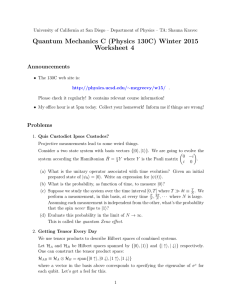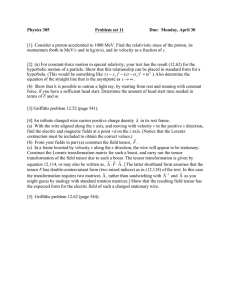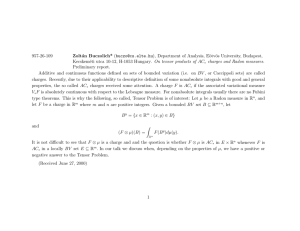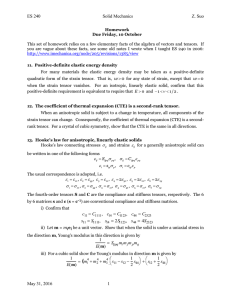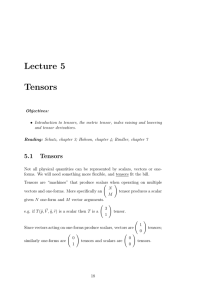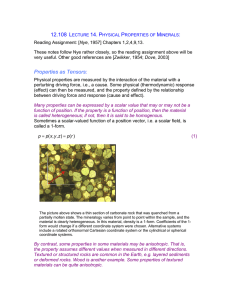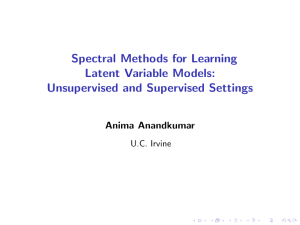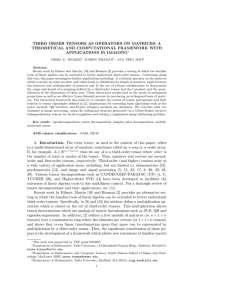Particle Physics HW2 1. To get comfortable with manipulations in special relativity, we will start with a simple version
advertisement
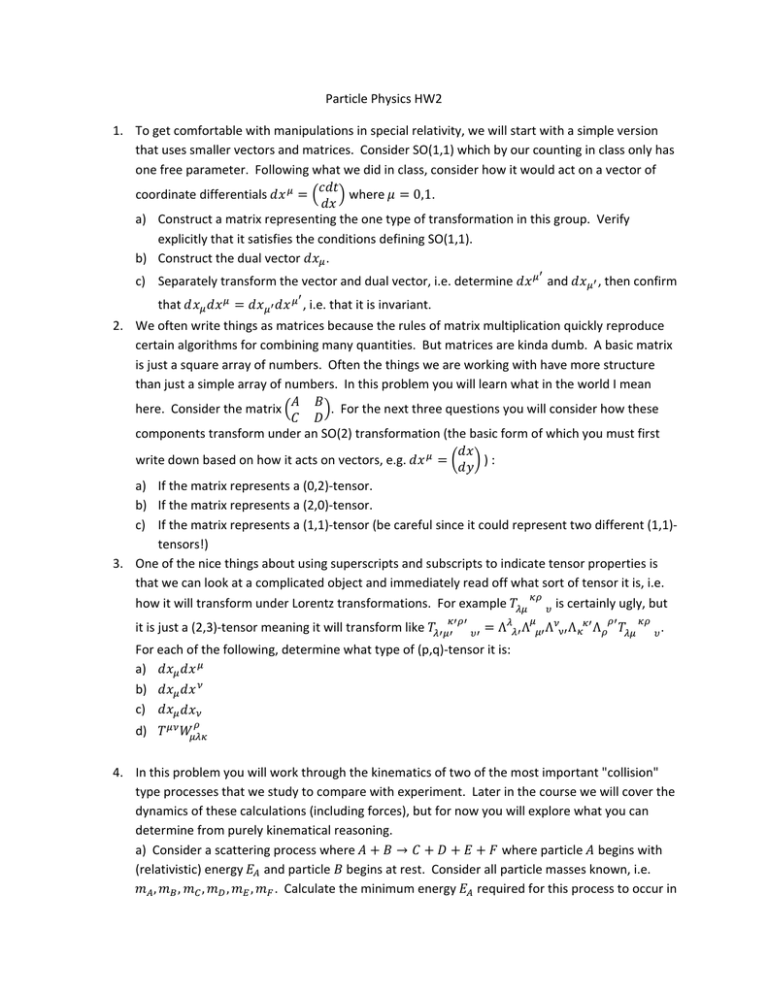
Particle Physics HW2 1. To get comfortable with manipulations in special relativity, we will start with a simple version that uses smaller vectors and matrices. Consider SO(1,1) which by our counting in class only has one free parameter. Following what we did in class, consider how it would act on a vector of coordinate differentials where 0,1. a) Construct a matrix representing the one type of transformation in this group. Verify explicitly that it satisfies the conditions defining SO(1,1). . b) Construct the dual vector c) Separately transform the vector and dual vector, i.e. determine and , then confirm , i.e. that it is invariant. that 2. We often write things as matrices because the rules of matrix multiplication quickly reproduce certain algorithms for combining many quantities. But matrices are kinda dumb. A basic matrix is just a square array of numbers. Often the things we are working with have more structure than just a simple array of numbers. In this problem you will learn what in the world I mean here. Consider the matrix . For the next three questions you will consider how these components transform under an SO(2) transformation (the basic form of which you must first ) : write down based on how it acts on vectors, e.g. a) If the matrix represents a (0,2)‐tensor. b) If the matrix represents a (2,0)‐tensor. c) If the matrix represents a (1,1)‐tensor (be careful since it could represent two different (1,1)‐ tensors!) 3. One of the nice things about using superscripts and subscripts to indicate tensor properties is that we can look at a complicated object and immediately read off what sort of tensor it is, i.e. how it will transform under Lorentz transformations. For example is certainly ugly, but it is just a (2,3)‐tensor meaning it will transform like Λ Λ Λ Λ Λ . For each of the following, determine what type of (p,q)‐tensor it is: a) b) c) d) 4. In this problem you will work through the kinematics of two of the most important "collision" type processes that we study to compare with experiment. Later in the course we will cover the dynamics of these calculations (including forces), but for now you will explore what you can determine from purely kinematical reasoning. a) Consider a scattering process where → where particle begins with (relativistic) energy and particle begins at rest. Consider all particle masses known, i.e. , , , , , . Calculate the minimum energy required for this process to occur in terms of , , , , , . You should be able to generalize your result to an arbitrary number of final particles. b) Now consider a decay process wherein → . Again consider all masses known, i.e. , , . Determine the energies and in terms of the masses , , . Also | and | | in determine the magnitude of the outgoing 3‐momentum of each decay product | terms of the masses , , .


